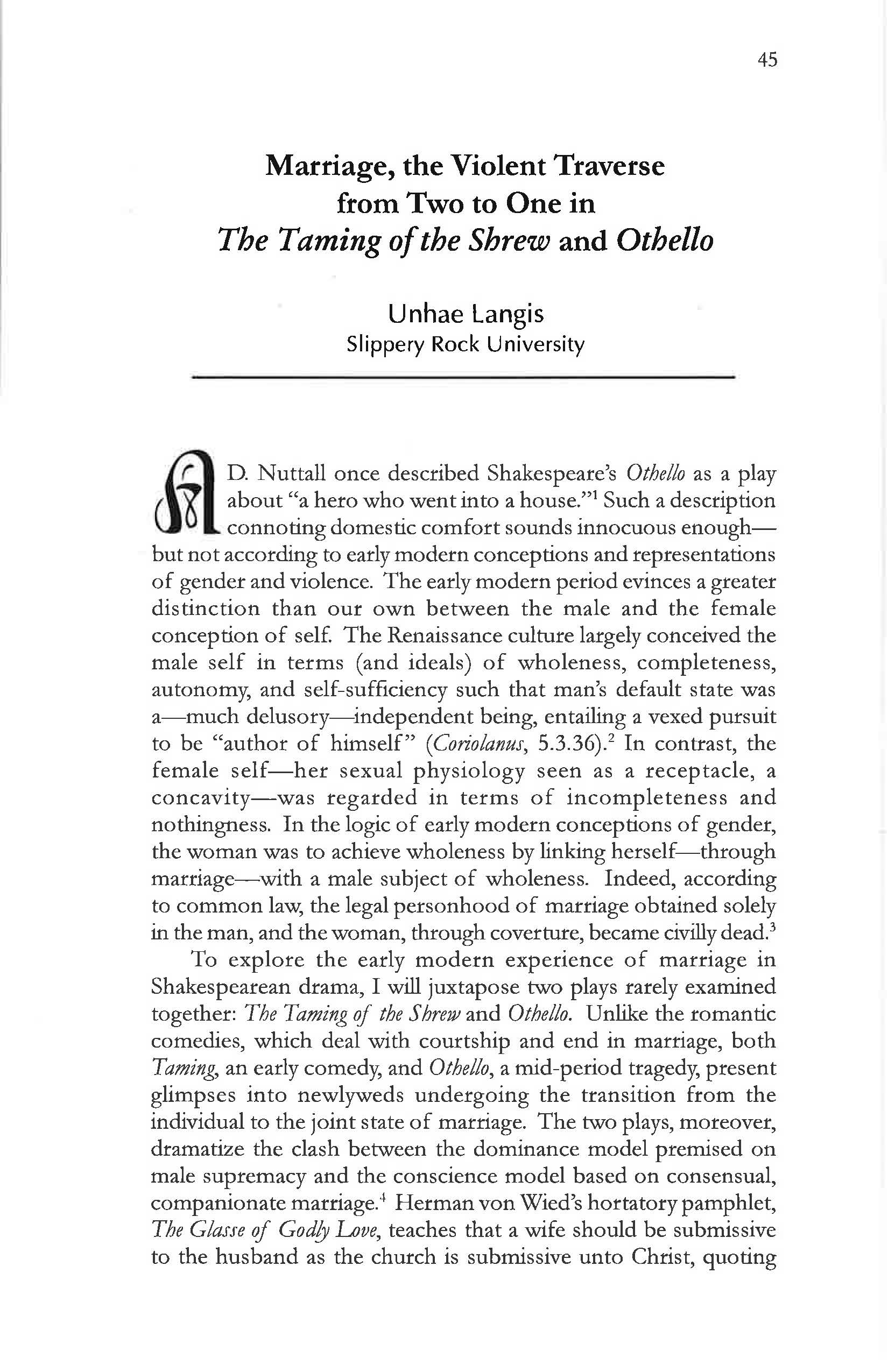Marriage, the Violent Traverse from Two to One in The Taming of the Shrew and Othello
Main Article Content
Abstract
A.D. Nuttall once described Shakespeare’s Othello as a play about “a hero who went into a house.”1 Such a description connoting domestic comfort sounds innocuous enough—but not according to early modern conceptions and representations of gender and violence. The early modern period evinces a greater distinction than our own between the male and the female conception of self. The Renaissance culture largely conceived the male self in terms (and ideals) of wholeness, completeness, autonomy, and self-sufficiency such that man’s default state was a—much delusory—independent being, entailing a vexed pursuit to be “author of himself” (Coriolanus, 5.3.36).2 In contrast, the female self—her sexual physiology seen as a receptacle, a concavity—was regarded in terms of incompleteness and nothingness. In the logic of early modern conceptions of gender, a woman was to achieve wholeness by linking herself—through marriage—with a male subject of wholeness. Indeed, according to common law, the legal personhood of marriage obtained solely in the man, and the woman, through coverture, became civilly dead.3
